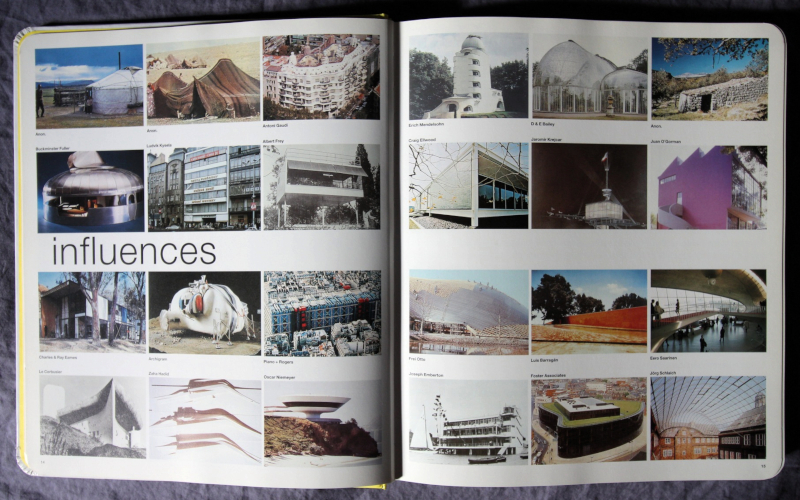Future Systems
Future Systems
Marcus Field
Phaidon, October 2000

Hardcover | 10 x 11-3/4 inches | 208 pages | English | ISBN: 9780714838311 | $X.00
Publisher Description:




Author Bio:
(Note: Books bought via these links send a few cents to this blog, keeping it afloat.)




Marcus Field
Phaidon, October 2000

Hardcover | 10 x 11-3/4 inches | 208 pages | English | ISBN: 9780714838311 | $X.00
Publisher Description:
Examines the continuing development of Future Systems, considered by many to be one of the most inspirational practices working today. The book features 30 recent projects, including at least eight built works, and designs for products and furniture, and also a glossary of projects from 1958-92. The recent and current building included in the text are the Media Centre at Lord's Cricket Ground, a yellow pontoon bridge at Canary Wharf, and one of the first millennium projects - the Earth centre, outside Doncaster.dDAB Commentary:
On pages 190 and 191 in Phaidon's new book Houses: Extraordinary Living, Gaetano Pesce's Bahia House (1998) in Brazil and Future Systems' Malator House (1994) in Wales face each other. They do this almost literally, since the round and slotted windows of the former make it appear like a face, while the round vents of the latter appear like two eyes set into the small glazed entry. Seeing the Malator House prompted me to dig into Phaidon's earlier, eponymous book on Future Sytems, in which the House in Wales, as it's called simply, is accompanied by dozens of other built and unbuilt projects. Published in 2000, Future Systems arrived at a hinge moment: between manual and digital processes in architectural production, for sure, but also between small and large projects and between good and bad times for Future Systems. One year before publication, the small UK firm led by husband-and-wife architects Jan Kaplický and Amanda Levete completed the Natwest Media Center in London, which earned them the Stirling Prize. In 2003, they would see the completion of their largest project, Selfridges in Birmingham, which I included in 100 Years, 100 Buildings. But by the end of the first decade of the millennium, Kaplický and Levete would divorce, they would split the firm into two, and Kaplický would die, in 2009 at the age of 71.Spreads:
So flipping through the pages of Future Systems is an ironic experience, its optimism tinged with the knowledge of what would happen in the ensuing years. Everything in the book -- its words by Marcus Field, the generous illustrations of projects and influences, even the rounded corners of its pages -- looks to the future, an optimistic future of technology harnessed for good. Of course, events well outside of Future Systems' control would steer the 21st century in a different direction, from the events of September 11 and the use of technology for surveillance, to the rise of social media and the shift of capitalism toward one of surveillance as well. Kaplický's preference for blobs was rooted in an effort to apply technologies from, for instance, boat building to architecture (it happened with Natwest), but it was also one source of the split between him and Levete, who moved toward more "rational" and "practical" forms. Although architects have moved on from blobs, those who embrace technology to create flowing forms or even more rational forms through advanced means owe a lot to the pioneering work of Future Systems. In turn, this book is a great snapshot of a moment when history's lessons were applied to architecture's optimistic future.




Author Bio:
Marcus Field is a freelance arts and architecture journalist. He has worked as an editor on the Architects' Journal, Blueprint and The Independent on Sunday. He lives in Devon and London.Purchase Links:
(Note: Books bought via these links send a few cents to this blog, keeping it afloat.)



